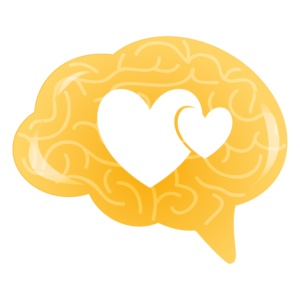The Chemistry of Romantic Love and the Romance Novelist
 Anthropologist Helen Fischer argues that romantic love is actually hard-wired into the human body. After studying individuals who described themselves as just having fallen “madly in love”, her team scanned their brains. It was not the cognitive, deep-thinking, philosophical parts that lit up. As you might expect, it was the older, more primitive regions that experienced increased blood flow due to being doused in the chemicals of love–like phenylethylamine (PEA), a close cousin to amphetamines.
Anthropologist Helen Fischer argues that romantic love is actually hard-wired into the human body. After studying individuals who described themselves as just having fallen “madly in love”, her team scanned their brains. It was not the cognitive, deep-thinking, philosophical parts that lit up. As you might expect, it was the older, more primitive regions that experienced increased blood flow due to being doused in the chemicals of love–like phenylethylamine (PEA), a close cousin to amphetamines.
Have you ever been lovesick, standing in front of the object of your affection and experienced euphoria, dry mouth, been out of breath, lose your appetite? It’s because you’re on nature’s amphetamines.
But your body can’t sustain a continuous high, so it begins letting the brain down with endorphins, nature’s painkillers. Suddenly everything feels right, all your aches and pains are forgotten and you attribute that feeling of well-being to being with your partner.
Oxytocin, a powerful anti-inflammatory, is released along with vasopressin which mitigates stress. You begin to get attached to your partner. You feel safe, stable, tranquil, and at peace with your lover. Your body wants to bond with them to keep these feelings (and chemicals). And with romantic love, this is easy to trigger. These chemicals are regularly released during sexual contact with a bonded partner.
Now throw romance novels into the mix.
 In 2014, University of Toronto researchers Maja Djikic and Keith Oatley found that reading romance novels, actually helps develop empathy skills. Reading romance allowed subjects to better interpret the emotions of others. The researchers felt that good fiction could even put its readers through an emotional roller coaster as if they were the protagonist. And as a reader of romance, I can attest to exactly that feeling when I’ve read a sweeping love story.
In 2014, University of Toronto researchers Maja Djikic and Keith Oatley found that reading romance novels, actually helps develop empathy skills. Reading romance allowed subjects to better interpret the emotions of others. The researchers felt that good fiction could even put its readers through an emotional roller coaster as if they were the protagonist. And as a reader of romance, I can attest to exactly that feeling when I’ve read a sweeping love story.
So in effect, when a romance novelist writes about characters falling love, the readers are falling in love right along with them. All those same chemicals affect their brains, making them at first lovesick and then bonding them with the heroes and heroines. If the novelist has done their job right, the reader will experience those overwhelming physiological feelings of love. And if a reader falls in love with their characters, they’ll turn to the novelist again and again to feel that feeling.
Extrapolate a little further and it becomes apparent that writers of LGBTQIA romance fiction can actually help bring greater acceptance and understanding of sexual and gender identities. By allowing readers a chance to see that love is love no matter the gender of the lovers, romance writers are making the world a better place.
So remember that when you’re writing. Write the future that you wish to see. Write about LGBTQIA characters who are accepted as they are, loved wildly and romantically. Your readers will empathize, fall in love with them, too. And the next time they meet a member of the LGBTQIA community, they’ll remember and realize that everyone deserves a happy ever after. We can change the future–one book at a time.
[adinserter name=”Amazon”]
